The power of the internet has exposed us to an abundance of brilliant creative works from around the world. With this, it’s often demonstrated just how universal Ivy Style truly is.
I can’t quite pinpoint when I first came across Andrei Mashanov’s illustrations. Perhaps that’s because he’s worked with so many brands I admire, making it hard to keep track.
You don’t have to be American to appreciate Ivy Style. Andrei was born in Russia and now lives in Serbia, and I’m, of course, from England. It’s fascinating how we’re both drawn to this style.
After admiring his work for a long time, I knew I had to chat with Andrei to learn more.
Please could you start by introducing yourself and explaining what you do?
I’m Andrei Mashanov, I’m an illustrator, menswear enthusiast and full-time dad. I specialise mostly in menswear, running a blog on Patreon and doing commissioned work for menswear-related brands.
There’s a great community of menswear illustrators over on Instagram, of which you’re very firmly a part. What’s even more remarkable is how unique your style is compared to others; your work is unmistakably yours. How did the combination of menswear and illustration start for you?
Firstly, I’d have to say that, in my opinion, every illustrator from the aforementioned community has his own style. And that is something great, and in my belief, essential in this craft. I’m genuinely touched by your high rating of my work.
As for the actual question, I’d say that it generally starts from my personal passion for menswear and interest in certain items and styles. Since my background is unrelated to menswear fashion or retail, illustration happened to be the most accessible medium to express my views on style.
I find it really interesting that you’re originally from Russia and now live in Serbia. Does the combination of your heritage and current residence influence your work at all?
I guess we’d need a microscope for this one! My personal take on Russian influence on my work is that I tend to keep weather as one of the key factors when coming up with an outfit. The climate dictates certain preferences for essential items. For example, in Moscow, you’ve got to have a decent down jacket, which you’ll be wearing from roughly late October to late March. It’s impossible to make it through the season without a pair of warm gloves and a beanie. But for Belgrade, it’s almost the opposite—a down jacket might only have about five outings per year.
Another aspect is more subjective and rooted in understanding—or should I say, personal interpretation—of the city’s history. For me, Moscow felt kind of unforgiving for Ivy Style. It’s like you have to pick one side or the other, while the whole concept of Ivy, at least in my view, is about that light-hearted play between high and low.
We joked when we were speaking earlier that Ivy style knows no borders, and I couldn’t agree more with that sentiment. What particularly do you love most about the style?
Perhaps it’s just what I touched on earlier: it’s always something in between, which is very playful and always about self-expression. But personally, I really appreciate that Ivy is based on items and fabrics that can be described as “proper.” I also believe that Ivy is truly a timeless style, and that’s fascinating. Being inherently about youth, this style transforms with every personal take and evolves organically over decades.
I appreciate the fact that you often incorporate the character of a fox into your illustrations. I suppose that makes your work more relatable to anyone and everyone, regardless of who you are or what you look like. Where did the idea of the fox come from?
Like most menswear illustrators, I started with a character more or less reminiscent of myself. And despite doing that for years, I always felt it didn’t really stick with me.
But I certainly needed a character who could be a model. Choosing an animal felt like the right move for me, as it brings a certain level of self-irony into the image. A fox seemed like the perfect candidate: bright and conspicuous, without being too exotic or flashy. That’s just for its visual appearance. Culturally, foxes tend to have an image of an intelligent and cute animal.
Like everyone, I’m a big fan of Jason Jules, so when you did the illustrations for GANT featuring him, I thought that was such a great idea. What was your role in the collaboration?
This project was centred around a zine about GANT’s heritage, particularly their popover shirts. Jason’s knowledge and expertise, which he shared in the text he wrote for the zine, was the main part.
However, we also wanted to show those popovers from the 1960s as actual garments, styled differently. After a brief (and very pleasant) chat with Jason, I compiled a bunch of fits from the contemporary GANT assortment to frame those gorgeous popovers. Then it was a straightforward process of sketching and rendering. So, in the end, I can say that along with the drawings, I also did some styling for that project.
Are there any pieces of your work that you’re particularly proud of?
Yes, there are a few pieces that I’m still quite fond of. But I’d prefer to keep that a secret, as none of my works has stood my personal test of time. Generally, my opinion matches how people react to certain pictures. It’s perhaps easier to appreciate something where the author’s passion is more prominent.
You’re always putting together outfits for your illustrations. Are they all pieces you own, or are some on your wish list?
For my illustrations, I style all the fits myself. This isn’t always possible for commissioned work, but most of the time, I have the opportunity to suggest or tweak the styling, which is probably one of the most fun parts of the process.
But unfortunately, I own just a fraction of the stuff I draw, and most are on my wish list. For example, the “Michael” derbies from Paraboot—no doubt I’d love them in the flesh, but I’m hesitant without trying them on first. I can also lose interest in a garment after featuring it in an illustration. Spending so much time looking at and studying certain items can dull their shine. That happened with a traditional Tyrolean coat style, the “Hubertus,” which I’d appreciated for years. After illustrating it and styling it, I realised it’s not really my cup of tea.
As for an item I wear the most, Desert Boots from Crown Northampton take first place. If you take a look at my work, you can tell I’m an advocate for Desert Boots. Let’s just leave it there—or arrange an hour-long podcast on the subject!
Finally, it’s great to see how popular your work is within and beyond the Ivy community. You have a Patreon that people can subscribe to; what can they find over there?
My Patreon blog is essentially an extension of what I do on Instagram, with a focus on styling and how to get the look. There’s already a collection of artwork that hasn’t appeared on Instagram. I also create collages to visualise alternative styling options, helping me to shake off those “what if I change the shirt or trousers?” thoughts. For some people, seeing things visualised is easier than imagining them.
In summary, I’d say that on my Patreon blog, all these random pieces of style inspiration come together to form a more or less coherent narrative about building a timeless wardrobe with fun and comfort in mind. Just to be clear, I’m not trying to write a new Bible for men’s fashion. It’s about what I’d love to wear and what I think is worth investing in.
A huge thank you to Andrei for chatting with me—I’m excited to see even more fit inspiration from him in the future! His unique approach to menswear illustration is truly inspiring.
Make sure to check out his Instagram, amashanov, for regular updates, and if you haven’t already, why not subscribe to his Patreon? There’s a wealth of exclusive content waiting for you, from styling tips to additional illustrations that you won’t find anywhere else.
In Other News…
Proper Cloth
Easy on the Ivy readers can use my code TOMHOY10 (link in bio) for 10% off their first order.
I created three shirts with Proper Cloth that fit exactly what I was looking for: a white Oxford Clough button-down, a Black Watch tartan Oxford, and a Japanese selvedge shirt blending Ivy and workwear.
Creating a custom shirt with Proper Cloth is simple. You can choose everything from the collar and buttons to fabric, making it easy to create something truly unique.
I'm very happy with how these turned out—the quality is exceptional, and the fabrics are spot on. They’ll be in regular rotation in my wardrobe. Check them out for yourself!




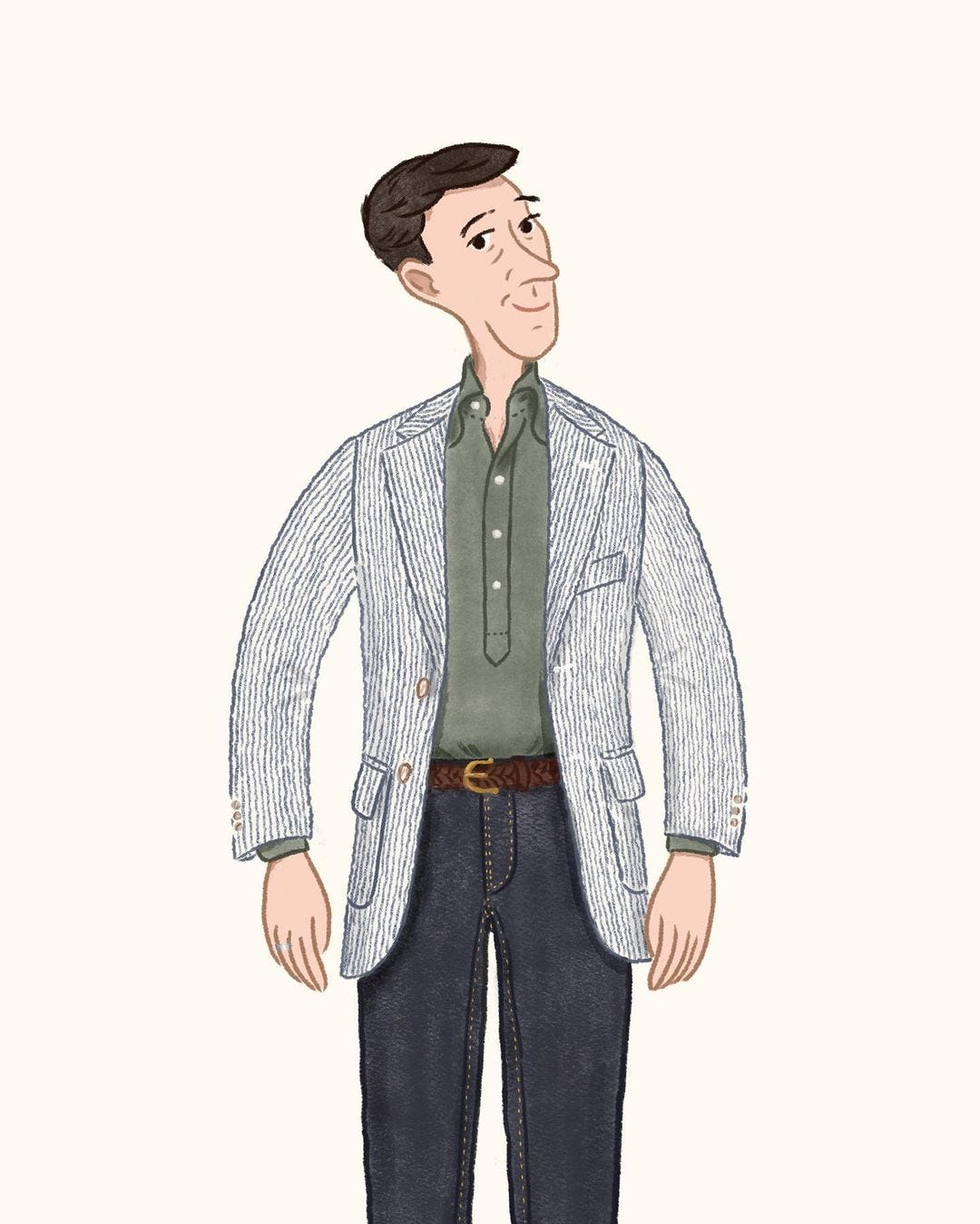
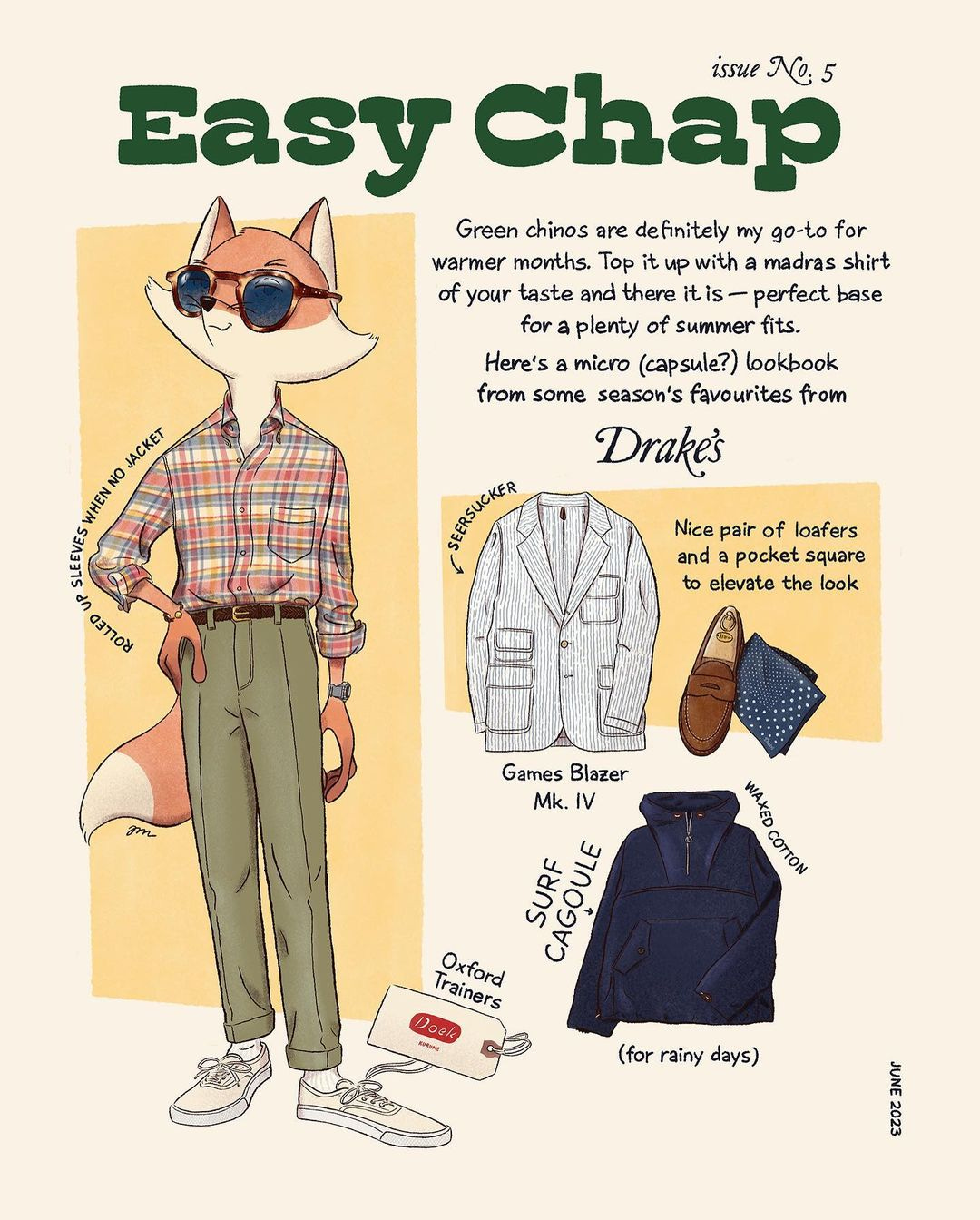
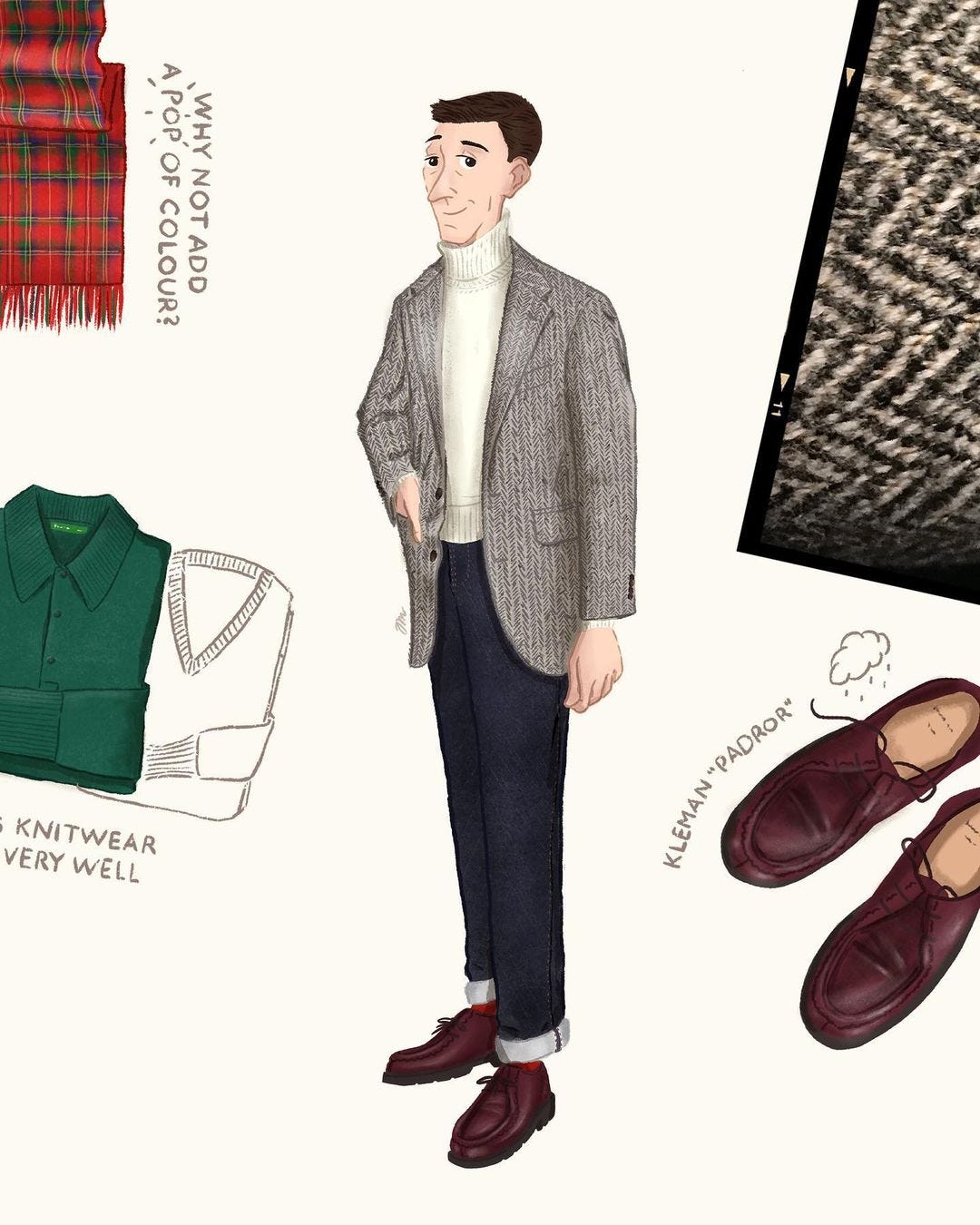
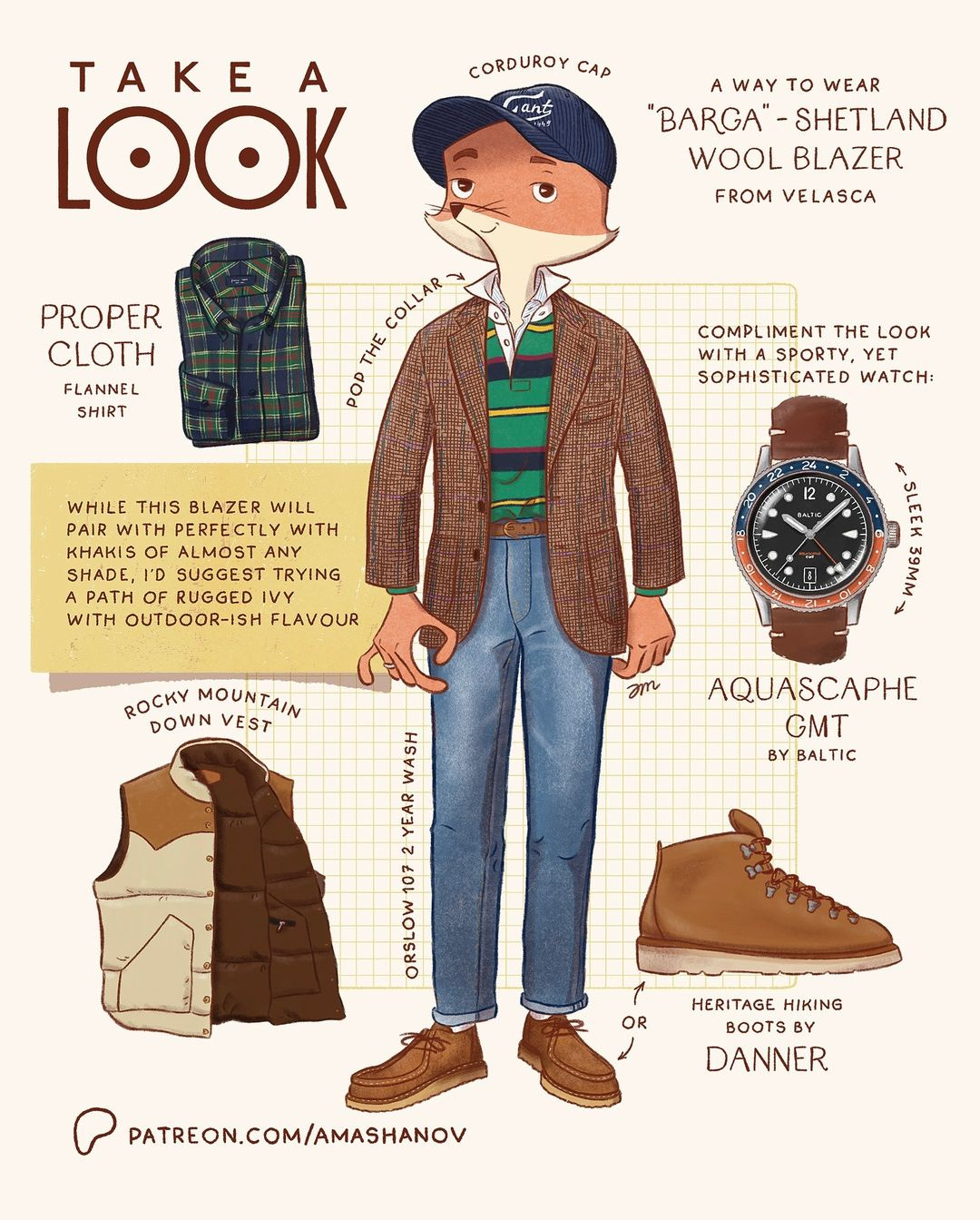
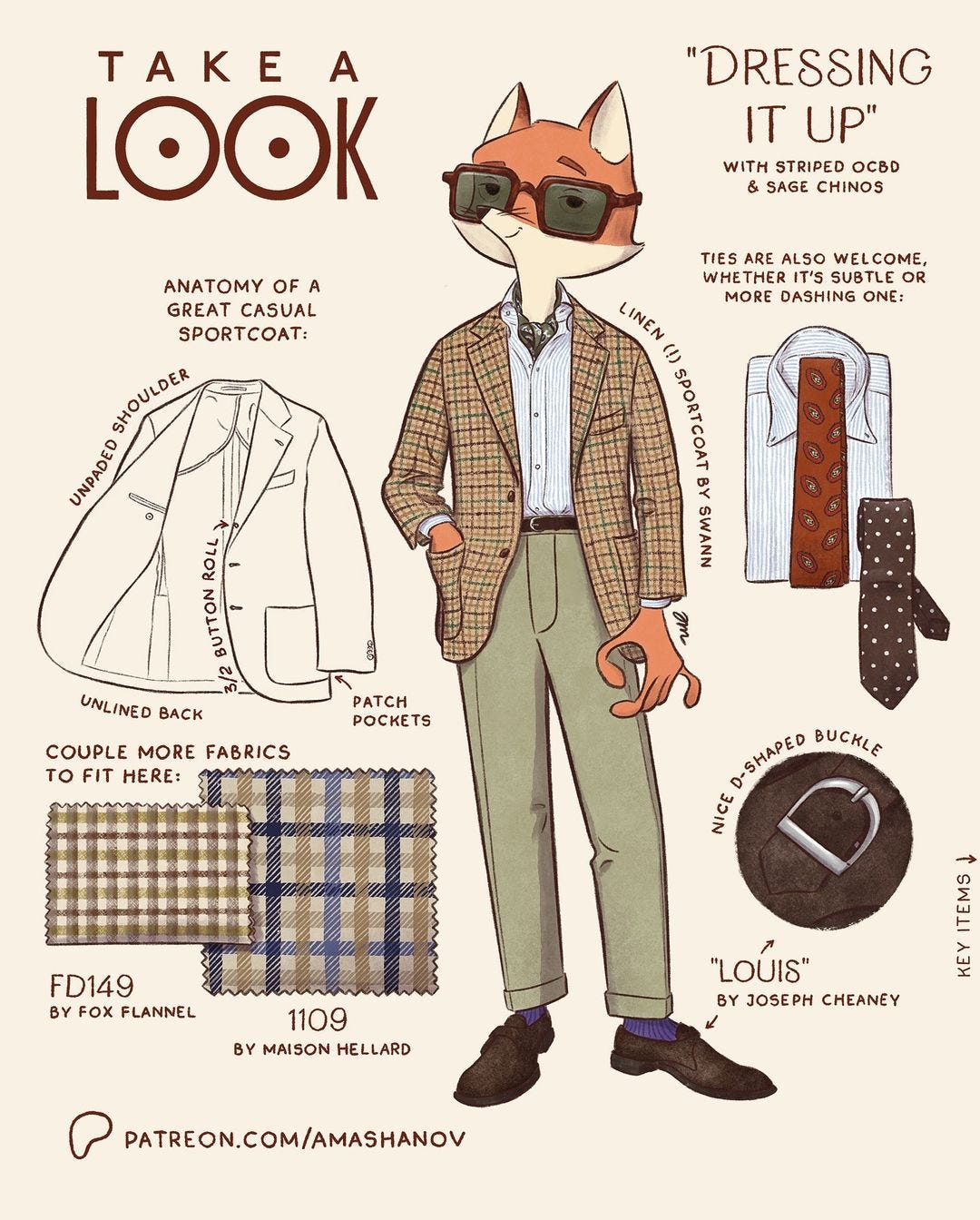
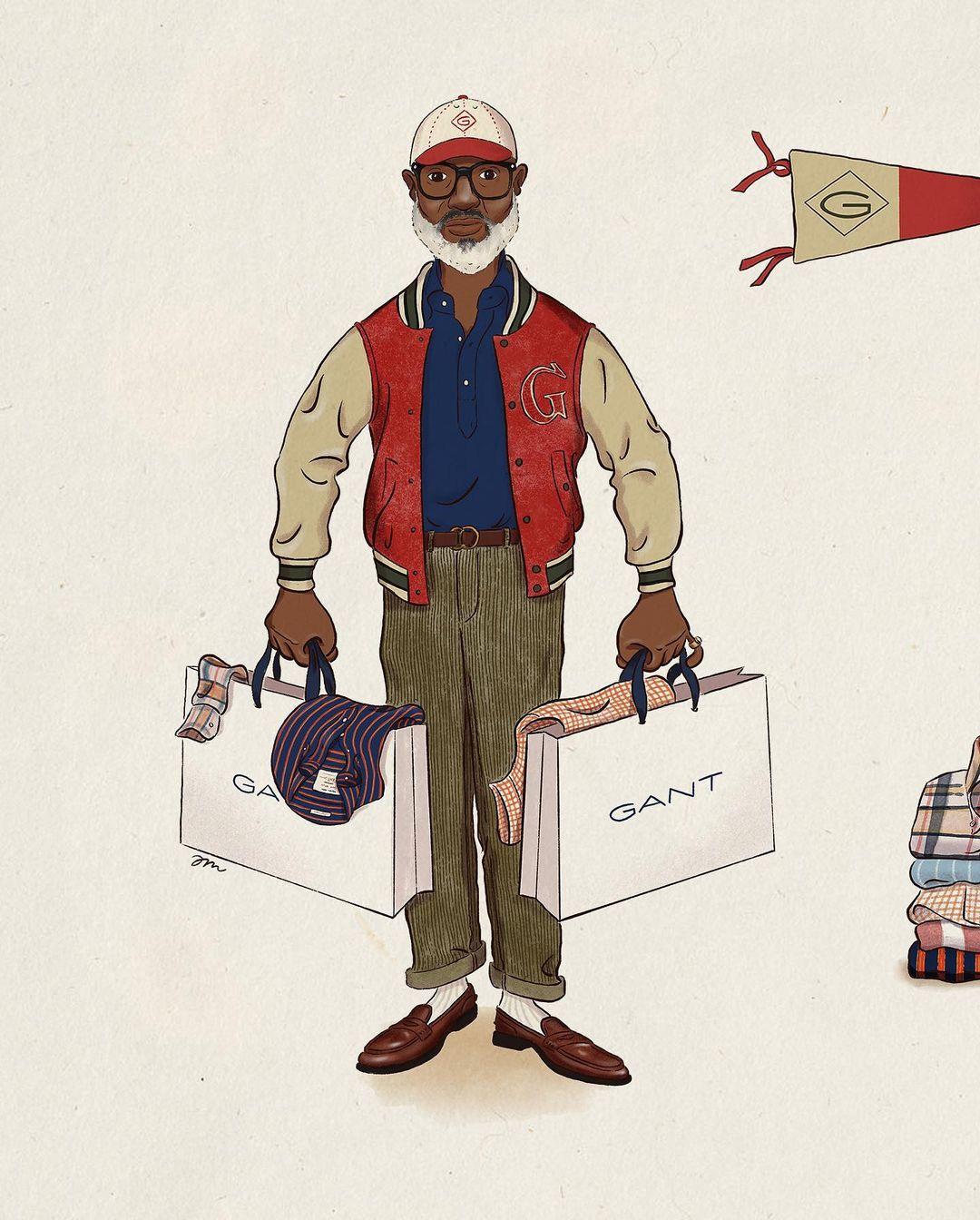

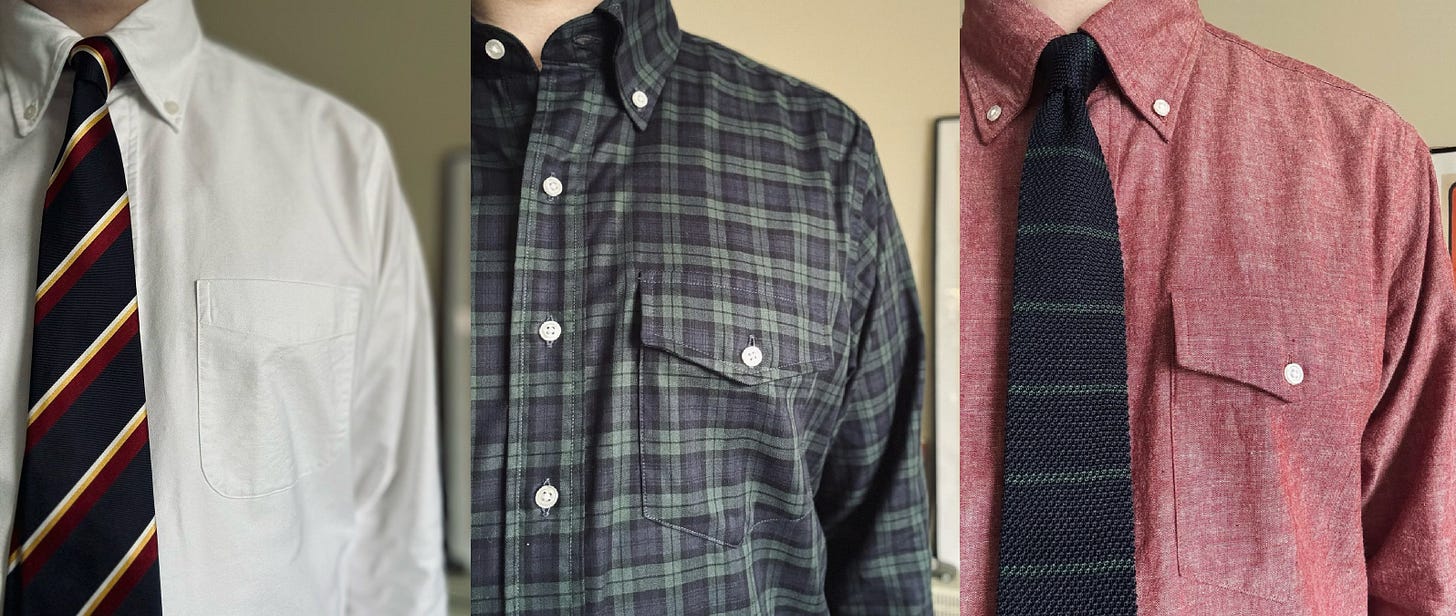
So glad you featured Andrei’s work Tom, I love his illustrations. Great stuff!